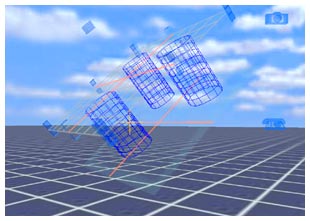Nice couple pages over on C|Net about the (re-)emergence of web 3D in an interview with vr pioneer Tony Parisi. Good article. The only issue I have is this quote from Mr. Parisi:
The bulk of the interface design will come from (the) gaming community, with additional innovation through these proprietary 3D chat worlds. But in most of these chat rooms, there’s nothing to do! You see someone’s avatar, and they’re picking their nose. It’s a piece of glitz attached to text chat. In an application like “Everquest,” you have exactly the same environment design and you’re there to do something. There has to be a purpose.
There is no real “purpose” in Second Life either other than what people who sign on bring to it, yet they somehow either manage to find things to do or not – just like most people do in real life. The assumption that people want to do more doesn’t really jive with what I’m discovering. Not everyone wants to spend their evenings slaying dragons or mining virtual gold or, for that matter, creating virtual content or managing virtual property; alot of people just chat about real life issues. So in that way, these 3D interfaces are more like teleconferencing than gaming. Now that the technology is here, we might discover that most people would rather just talk than fire their BFG’s at each other.
I also wonder if Parisi is aware of the serious discussion going on about open-sourcing Second Life. I mean, how can Linden Labs not be aware of the open source solutions beginning to invade their space… one of the people behind Croquet is giving a virtual talk inside Second Life! Interesting times. Now excuse me while I load Maya and work on a nose-picking animation.

